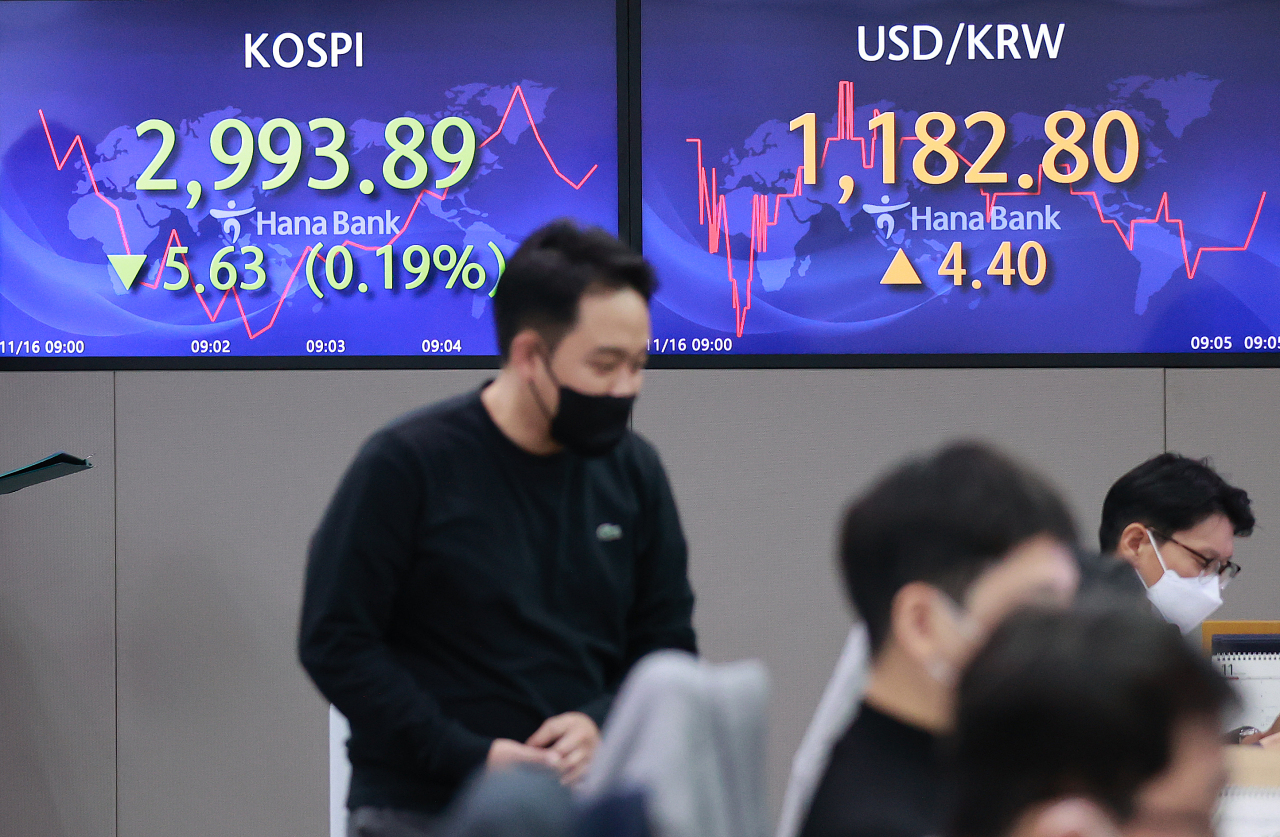Analysts in and out of the country remained divided on their outlooks for South Korea’s benchmark Kospi next year this week, noting volatilities stemming from inflationary pressures, a memory down cycle and Korea’s presidential election in March.
Morgan Stanley analysts on Wednesday slashed their growth target for South Korea’s benchmark Kospi by 250 points to 3,000 for end-2020, citing an ongoing unfavorable environment for the equity market and pointing to the upcoming presidential elections as a key swing factor.
In a report dubbed “2022 South Korea Equity Strategy Outlook” released to reporters here, the firm saw the Kospi moving overall lower next year and in terms of earnings per share, they estimate that the revision cycle seems to have already peaked.
The firm forecasts the Kospi to trade within a range of 2,750-3,150 in the near-term.
“An unfavorable environment continues for the Korean equity market, as the memory down-cycle is underway, central bank supports are fading, inflationary pressures are leading to increased cost burdens on companies, and retail participation is not as robust as before,” the report said.
The Kospi has been hovering at around 3,000 points in recent weeks, after hitting the historic mark in January.
It closed at 2,962.42 on Wednesday, losing 1.16 percent from the previous session.
In contrast to Morgan Stanley’s outlook, recent notes from local analysts draw a rosier picture for the Kospi.
A recent report from Hyundai Motor Securities said that the Kospi would continue a bullish rally next year and even clear the 3,500 mark, driven by the stabilization of the supply chain.
KB Securities last month in its annual report set the growth target at 3,600, saying despite volatilities expected to be prompted by the US Federal Reserve’s tapering, related concerns are expected to be quelled after the end of the year, as South Korea’s economy is to continue its rebound.
Mirroring Hyundai Motor Securities’ forecast, Shinhan Investment set its Kospi trade range at 2,850-3,500, based on the weak dollar trend and stronger dividend handouts here. Foreign investors are unlikely to carry out mass sell-offs, taking the US Fed’s tapering and the global supply chain bottleneck into consideration, according to Shinhan Investment.
According to the nation‘s main bourse operator Korea Exchange on Wednesday, the combined net profit of 586 out of 670 firms listed on the Kospi, in the first nine months of the year, jumped 165.8 percent on-year to 128 trillion won ($108 billion). KRX did not consider 84 companies which were categorized as financial institutions or “inadequate for audits.”
The Bank of Korea is projected to carry out its second pandemic-era rate hike in a scheduled rate-setting meeting on Nov. 25, in a bid to absorb excess liquidity it injected into the market throughout last year to provide a cushion from COVID-19 woes. The central bank in August ended more than a year of the record-low interest rate of 0.5 percent by raising it 25 basis point to the current 0.75 percent.
Inflationary pressure has been a key concern for Asia’s fourth-largest economy in recent months. Korea’s consumer prices rose 3.2 percent in October on-year, the sharpest clip in almost a decade. BOK Gov. Lee Ju-yeol earlier said the 2021 inflation rate is likely to exceed the central bank’s forecast of 2.1 percent.
On the next presidential election scheduled for March 2022, Morgan Stanley said that while historically equities have “underperformed,” in the time frame ahead of the event there are a few factors that separate the upcoming one from the precedents. While the 2017 presidential election was expedited by former President Park Geun-hye’s impeachment, the next one is expected to be a “normal one.” On top of that, with the National Assembly to maintain a Democratic Party of Korea majority at least until mid-2024, the policy adoption process is expected to hit a brake as the passing of bills and budgets require the assembly’s approval.
Meanwhile, the firm picked refiners and banks as key investment ideas for the first half of next year. Local refiners such as S-Oil should be beneficiaries of oil prices expected to spike in the cited period and banks would be further bolstered as the BOK is likely to carry out further rate hikes.
(
mkjung@heraldcorp.com)








